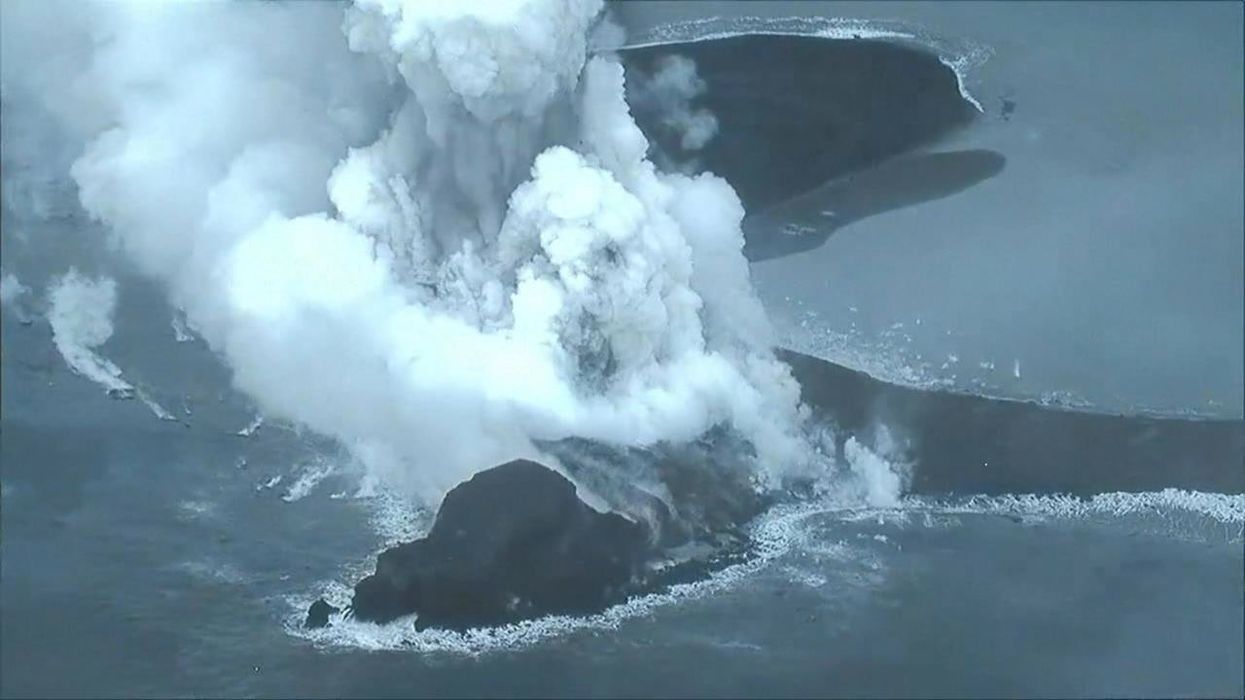An underwater volcano has erupted off the coast of Japan, sending towering plumes of ash and smoke crashing into the sky.
The rare moment was caught on camera by the country’s coast guard, just weeks after the same volcano gave birth to a new island in the Pacific Ocean.
The volcano previously erupted on October 21, continuing to spew out rocks and ash every few minutes for more than a week.
By October 30, this volcanic debris had collected into a massive pile, just one kilometre (0.6 miles) off the coast of Okinahama, on the south coast of the island Iwo Jima.
Eventually, it formed its own volcanic land mass, which experts are calling “Nijima”, meaning “new Island” in Japanese.
Whilst the October eruptions eventually died away, Nijima remained in place – now measuring 100 metres (33 0 feet) across and 20 metres (66 feet) above sea level at its highest point.
Furthermore, satellite images taken by the European Space Agency on November 3 revealed that the infant isle had become visible from space.

However, a brand new eruption rocked the new formation just three weeks later, on November 23, the Coast Guard announced last week.
This fresh explosion shot ash and smoke 200 metres (660 feet) up into the sky, and sent debris showering down into the waves.
The recent excitement suggests volcanic activity is resuming in the seas surrounding Iwo Jima after a brief calm spell which followed an eruption in July 2022, as Live Science notes.
It's not clear how the most recent eruption will affect the survival of Niijima, but experts have acknowledged that the baby island might not stand the test of time.
Yuji Usui, an analyst in the Japan Meteorological Agency’s volcanic division, told the Associated Press that Niijima’s “crumbly” foundations could easily be washed away by waves.
He said experts are still analysing its makeup, noting that it could survive longer if it’s made of lava than if it consists of volcanic rocks such as pumice.
“We just have to see the development,” he said. “But the island may not last very long.”

Undersea volcanoes and seismic activities have formed new islands in the past.
In 2013, an eruption at Nishinoshima in the Pacific Ocean south of Tokyo led to the creation of a new island, which kept growing during a decadelong eruption of the volcano.
Also in 2013, a small island surfaced from the seabed after a massive 7.7-magnitude earthquake in Pakistan. In 2015, a new island was formed as a result of a month-long eruption of a submarine volcano off the coast of Tonga.
Of about 1,500 active volcanoes in the world, 111 are in Japan, which sits on the so-called Pacific “Ring of Fire,” according to the Japan Meteorological Agency.
The Ring of Fire — which stretches from the southern tip of South America, along North America's west coast, across the Bering Strait, down through Japan and on to New Zealand — is the most seismically and volcanically active zone on the planet.
Sign up for our free Indy100 weekly newsletter
Have your say in our news democracy. Click the upvote icon at the top of the page to help raise this article through the indy100 rankings














